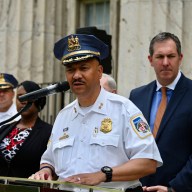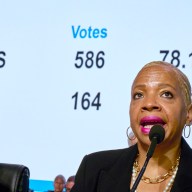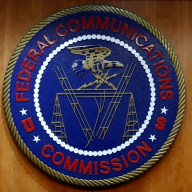VANCOUVER, B.C. – Whether they’re distracted, disenchanted or entirely disinterested, fewer Canadians are making the trek to their local polling station on voting days.
Recent federal and provincial elections indicate that just over half the eligible voters make the decision for the whole electorate when they go to the polls to vote. Expert opinions on why fewer Canadians make the effort to vote range from youth indifference, to negative attitudes around politicians to an electorate so disengaged that some voters missed the election entirely.
In the last two decades, voter turnout has been steadily declining to the point where turnout in the most recent federal election and votes in British Columbia, Ontario, Quebec and Alberta reached historic lows.
Only 41 per cent of the eligible voters bothered to cast their ballot in Alberta’s provincial election last year, while just 52 per cent of B.C’s voters went to the polls in last week’s Liberal-versus-New Democrat contest.
Just 58.8 per cent of those eligible voted in last October’s federal election, the first time since Confederation that turnout dipped below 60 per cent.
Lawrence LeDuc, in the political science department at the University of Toronto, said the simple explanation is demographics.
“Younger people vote at lower rates. They enter the electorate later in life and they are not as keyed into politics as their previous generations,” he explained.
LeDuc, who has done several studies for Elections Canada on low turnout, said unlike older Canadians, there’s nothing that incites young people to cast a ballot.
“Generations that live through wars and depressions, for example, connect politics with important things that are going on in their lives. The current younger generations don’t seem to.”
But Nelson Wiseman, a University of Toronto political science associate professor, blames the voter list in part.
He said current voters lists aren’t as accurate as the old enumeration system, when an army of people went door to door at election time making sure eligible voters were on the list and letting them know an election was going on and where to vote.
“Now, they (people) just want to watch the Food Channel or the Golf Channel. You can sail right through an election and not know it’s happening.”
Dropping the enumeration process was supposed to make elections shorter.
Instead, the parties have used the time to push out pre-election ad campaigns such as the federal Conservatives’ recent attack adds on Liberal Leader Michael Ignatieff.
Those campaigns play into the theory raised in a 2003 study for Elections Canada by Leduc and Jon Pammett of Carleton University in Ottawa.
The two researchers found the largest reason for voter decline was negative public attitudes towards politicians.
About 25 per cent of non-voters questioned in the study gave that as one of the reasons they didn’t vote, while another 24 per cent said they had no interest in the election.
“There is a widespread perception that politicians are untrustworthy, selfish, unaccountable, lack credibility, are not true to their word, etc,” said the report entitled “Explaining the Turnout Decline in Canadian Federal Elections.”
A change in how the media cover campaigns also doesn’t help, said Wiseman.
“The media never used to cover the drinking habits or sexual practices of MPs.”
Wiseman also said the electorate may have become even more cynical by politicians saying it doesn’t matter who you vote for – just that you vote.
“If you’re going to show up to vote for a fascist, for a racist, I’d prefer you just stay at home and shut up. I don’t want you to turn out to vote,” Wiseman said.
“So politicians will give lip service, … but actually many of them – if not most of them – prefer not (to have) a higher voter turnout. That’s because the current system serves them.”
About two dozen countries have made voting mandatory with some success.
Australia’s voting rate hovers around 95 per cent because those who don’t vote face a small fine, about the cost of a parking ticket.
LeDuc agrees that could be a solution for Canada.
“Whether it’s the right solution or not is contentious. Do you want people voting who are voting just because they’re being forced to do so in order to avoid paying a fine?”
He is optimistic that as the younger generation ages, voting rates will go up, but not as quickly.
The other option to boost the voter turnout is to turn up the heat on what’s at stake in an election.
Wiseman notes that voter turnout was around 95 per cent in the 1995 Quebec referendum.
“Why was there such as high turnout? Because a lot was at stake. What was at stake in the B.C. election?” he asked rhetorically.
“Really most people feel that you know things aren’t going to change much.”
















